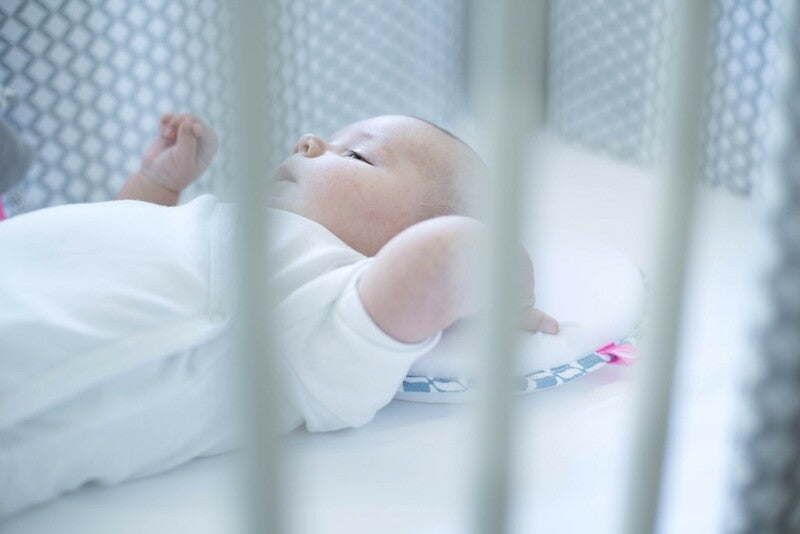Chickenpox in Children and Infants: Causes, Symptoms, and Remedies.
What is chickenpox?
Chickenpox is an extremely contagious exanthematic infectious disease (i.e. characterized by the appearance of a rash, a skin rash that causes red spots), which mostly affects children between 5 and 10 years of age, particularly between the end of winter and the early spring.
Causes of chickenpox
Chickenpox is caused by the Varicella Zoster virus which belongs to the Herpes virus family. It should be known that, even after the disease has healed, the Varicella Zoster virus does not die, but nestles in the nerve ganglia, remaining latent in the body, without causing discomfort.
How it is transmitted
The chickenpox virus is transmitted by the respiratory route, through the droplets of saliva or mucus emitted into the air by infected people when they speak or cough or, but more rarely, through contact with the liquid contained in the vesicles that make up the typical rash. of the disease.
Symptoms of chickenpox
After a rather long incubation (fourteen to twenty-one days) and a short period (not always present) of diffuse malaise and variable fever, the rash typical of the disease appears which is very itchy and consists of red spots to which center, over the course of a few hours, a collection of clear liquid forms.
When the liquid becomes cloudy, the vesicles turn into pustules, which in the final phase, drying up, become crusts. For the first four days, the different stages of the rash are present simultaneously on the baby's skin.
Then the spread of the eruption stops and the elements present gradually dry up to spontaneously detach within about six days.
When the scabs fall off, they could leave light areas on the baby's skin or, if he has scratched a lot, small scars. Both are destined to disappear over time.
How to recognize chickenpox?
Among all infectious diseases of childhood, chickenpox is the most easily recognizable, because the rash almost always appears immediately and has specific characteristics.
The rash typical of chickenpox, very itchy, progresses from the initial form of macula (slightly raised red spot, two to three millimeters in diameter) to that of a vesicle containing a liquid similar to a tear, and then transforms, when the liquid it becomes infected and cloudy, in a pustule and, finally, in a crust.
The rash appears initially on the scalp, face and chest; then it extends to the belly, genitals, arms and legs and lasts about six days. Later the scabs begin to fall off.
Infants at risk
Chickenpox in babies generally does not involve complications, unless there are problems with the immune system (i.e. natural defense) or if it is a newborn.
The antibodies to this disease, in fact, did not reach the fetus during pregnancy and, consequently, the newborn baby does not have them. In these cases, although rarely, the disease can lead to pneumonia , to be treated with antibiotics, and even more rarely to diseases that can affect the central nervous system (brain), such as encephalitis. A minor complication of chickenpox is the infection of the skin lesions. By continuously scratching the blisters, the child can, in fact, cause abrasions which can then become infected. Generally, it is sufficient to disinfect the vesicles with hydrogen peroxide, using sterile gauze. Chickenpox can also be transmitted to the fetus through the placenta and cause complications, although rarely, so it is good to avoid contact between the sick baby and pregnant women.
The cures for chickenpox
Usually the pediatrician prescribes drugs to relieve symptoms: antihistamines to reduce itching, antipyretics (for example paracetamol) to reduce fever.
In some cases, when chickenpox is at risk of causing more serious complications, such as can occur in infants and adults, it is possible to use acyclovir, an antiviral drug. The treatment must be started from the first day of the illness, that is to the appearance of the rash, and serves to attenuate the symptoms and accelerate the recovery. However, the use of acyclovir is not indicated for children who have contracted chickenpox but have no particular health problems.
Can it be prevented by vaccination?
Chickenpox can be prevented with a vaccine that contains the live but attenuated virus. It is mainly used to avoid the complications that the disease can entail. In Italy, vaccination against varicella has been made mandatory for new borns since 2017, but it is also recommended for older children. It can be given alone (monovalent) or with the tetravalent vaccination (MPRV), which also protects against measles, mumps and rubella. Vaccination against varicella is also recommended for women of childbearing age at least one month before seeking a baby. On the other hand, it is contraindicated during pregnancy.
Advice for parents
To alleviate the itching, it is possible to bathe the baby every day using a soap with a physiological pH, i.e. equal to the natural pH of the skin, after the blisters have dried. The child should then be dried, dabbing the skin with a soft towel, avoiding rubbing or rubbing the lesions; it is advisable to apply a moisturizing milk afterwards. On the other hand, talcum powder, which tends to clot with sweat and can be inhaled by children, should be avoided.
It is good to always keep the child's nails short to prevent scratching from causing abrasions which could then become infected. To do this, it is advisable to make him wear cotton gloves.
Dear mothers, after reading our article we recommend that you visit our Luxury kids website where you will find many articles for your child.






Leave a comment